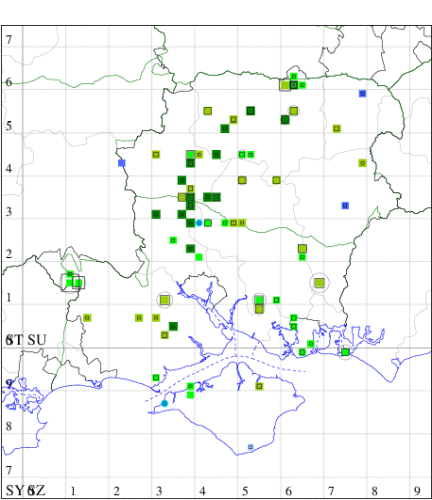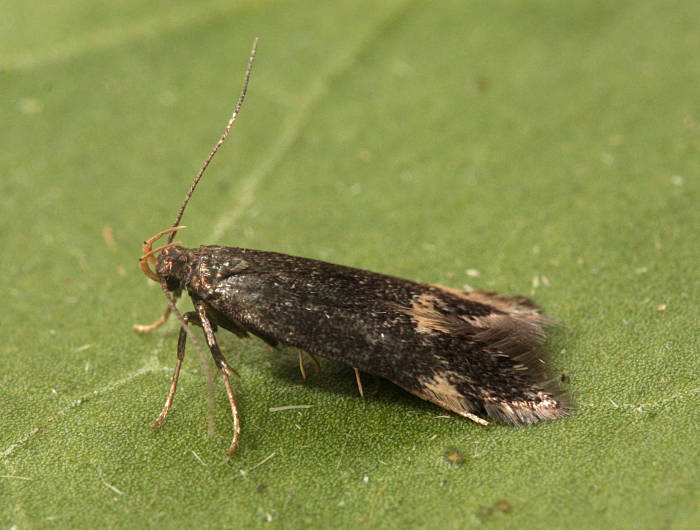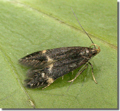Oxypteryx atrella
Checklist Number35.081 [B&F: 0731]
Verification
Record will normally be accepted but photo evidence may be required - check with CMR if not sure of identity
Classification
| Family: | Gelechiidae |
| Subfamily: | Anomologinae |
| Genus: | Oxypteryx |
| Species: | atrella |
| Authority: | ([Denis & Schiffermüller], 1775) |
Local on downland, rough ground, dry pastures and in woodland clearings throughout much of England and Wales; rare in Ireland. In Hampshire widespread and common; on the Isle of Wight, first recorded at Cranmore in July 2001. Wingspan 11-13 mm. The most likely confusion species is E. immaculatella, which differs in having a dark fuscous (ochreous in E. atrella) labial palpus, but often reliably separated only by dissection of the genitalia. Larva feeds within stems of Perforate St John's-wort and Hairy St John's-wort, over-wintering in a case made from leaf fragments.


The abundance in each month is indicated as follows:
 No records
No records Very occasional
Very occasional Irregular
Irregular Uncommon
Uncommon Off-peak, but not unusual
Off-peak, but not unusual Off-peak, but not unusual
Off-peak, but not unusual Main flight time
Main flight time| J | F | M | A | M | J | J | A | S | O | N | D | |
|---|---|---|---|---|---|---|---|---|---|---|---|---|
| Adult |  |  |  |  |  |  |  |  |  |  |  |  |
| Larval |  |  |  |  |  |  |  |  |  |  |  |  |




